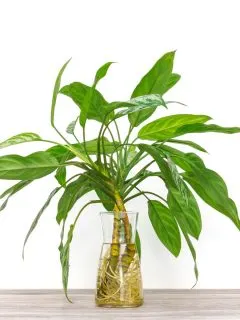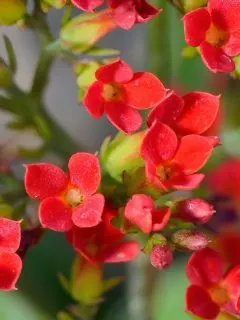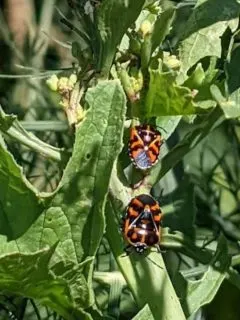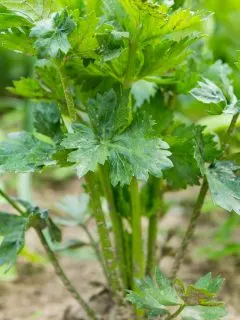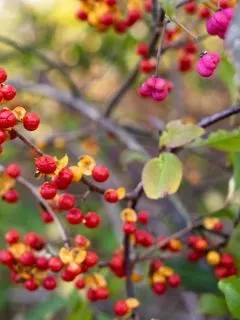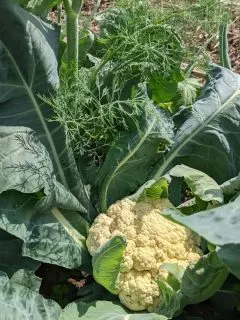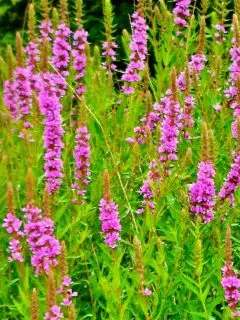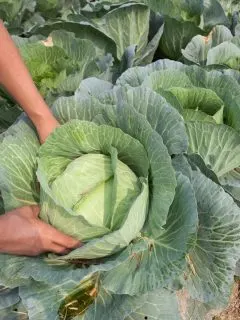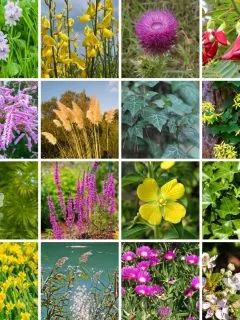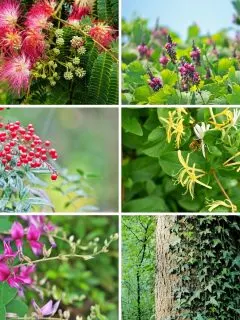Growing new plants from cuttings feels almost magical. A stem of new growth placed in water or soil sprouts roots of its own and grows into a whole new plant. The process requires little effort and is so rewarding! I especially enjoy rooting cuttings of scented geraniums for my porch and pothos to trail down …
Serena Manickam
Succulents are wonderful low-maintenance houseplants and drought-tolerant garden plants. Many of them also produce beautiful flowers! These flowering succulent plants add cheerful bursts of color to xeriscapes and brighten up rooms and porches. Most succulents prefer full sun or minimal shade and well-draining soil. If you live in a cooler climate, you can keep succulents as …
What are those brightly colored, shield-shaped insects in the vegetable garden? Are they friends or foes? Looking something like a fancy stinkbug, harlequin bugs suck the nutrients out of plant leaves and can devastate an entire crop if not controlled. This invasive pest spread to the United States from Mexico soon after the Civil War and …
Celery is one of those wonderfully versatile vegetables that you can almost always find in your crisper drawer. Great for everything from snacks to soup, maybe celery should be found in your garden, too! This cool-weather crop will appreciate a few plant friends to help provide shade, preserve soil moisture, suppress weeds, provide pest and …
With nearly a hundred aggressively spreading, nonnative plants degrading ecosystems in a single state, it can be easy to feel overwhelmed. To make things a bit more manageable, we have compiled a shorter list of some of the most common and worst invasive plants in Connecticut to help you identify and remove any invasives in …
Although a staple in the produce section of the supermarket, cauliflower is less often seen in home vegetable gardens, due to how difficult it can be to grow. Like other brassicas, cauliflower is a cool-season vegetable, a heavy feeder, and susceptible to significant damage from pests like cabbageworms and cabbage loopers. However, companion planting, or …
Some invasive plants may be pretty, but they can cause a lot of damage! Often called “noxious weeds,” invasive plants outcompete native species for space, sunlight, nutrients, and water, in turn reducing wildlife habitat. They can even have a negative economic impact, especially in industries like agriculture, forestry, and fishing. As a gardener, you can …
My attempts at growing brassicas, or members of the cabbage family, have been all but thwarted by pests like cabbage loopers, cabbageworms, and harlequin beetles. And when the ravaged plants have finally had time to recover and begin producing, they bolt instead, because the summer heat has set in. While any of a slew of …
About 1,100 nonnative plants (1) have naturalized in California, and nearly 200 of those have been designated as noxious weeds by the California Department of Food and Agriculture. These invasive plants not only damage the environment but the economy of the state as well. Take action against invasive plants in California by learning how to identify …
In Arkansas, invasive plants degrade ecosystems, reduce crop field productivity, and even cause harm to livestock. These aggressive nonnative plants outcompete native species for water, nutrients, and growing space, changing landscapes and reducing wildlife habitat. The good news is, as a gardener, you can make a difference! Learn how to identify and control invasive plants …

